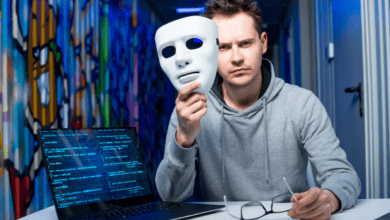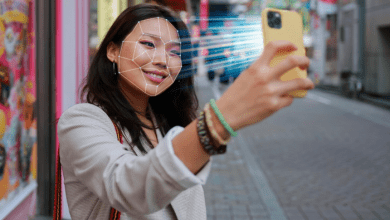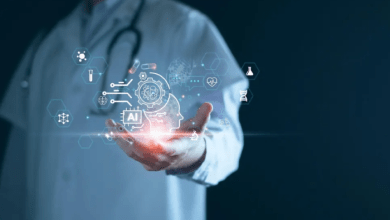
The Changing Face of Creativity
Art has always evolved alongside technology—from the invention of oil paint to the arrival of photography, from the first printing presses to digital tablets. Each shift provoked the same question: Does this new tool threaten artistic authenticity?
Today, that debate resurfaces in the age of Artificial Intelligence (AI). As generative models like DALL·E, Midjourney, and Firefly redefine the limits of image-making, artists and critics alike are asking whether machines are replacing the creative hand—or simply extending it.
The truth, as this article will argue, is clear: AI is not a rival but a collaborator. It doesn’t replace the human imagination—it amplifies it. The artist remains the author, curator, and emotional core. AI is the brush that learns.
A Brief History of Fear and Innovation
From Camera Obscura to Code
Every technological leap in art has sparked resistance. When the camera obscura first captured images in the 19th century, many painters feared their craft would vanish. Instead, photography liberated painting from realism and gave birth to Impressionism.
Similarly, when digital tools like Photoshop emerged in the 1990s, purists dismissed them as shortcuts. Yet, digital art became one of the most respected forms of visual culture in the 21st century.
AI continues this lineage—not as a threat, but as another brushstroke in the ongoing dialogue between art and technology.
The Shift from Manual to Conceptual
In the traditional studio, creativity was measured by technical mastery—control of brush, chisel, or lens. Today, conceptual vision is the true measure of artistry. AI democratizes execution, allowing artists to focus more on ideas rather than mechanical process.
The artistic challenge is no longer how to paint the sunset, but why and what it means.
How Artists Are Using AI Today
The New Creative Workflow
Contemporary artists integrate AI into every phase of creation:
- Ideation: Using text prompts to generate initial compositions or color schemes.
- Exploration: Iterating hundreds of variations in minutes to find the unexpected.
- Execution: Refining results with digital brushes or compositing techniques.
The workflow becomes cyclical—human imagination feeds the machine, and machine randomness fuels human intuition. This iterative dialogue forms the foundation of AI-augmented artistry.
Case Study — Refik Anadol and the “Data Sculpture”
Turkish-American artist Refik Anadol is among the pioneers merging AI with architecture and motion art. His “Machine Hallucinations” series transforms public data—images of clouds, stars, and architecture—into living, breathing visual symphonies.
Anadol describes AI as “a collaborator with its own visual language.” His works, exhibited at MoMA and the Venice Biennale, show that data can dream when guided by human intent.
AI as a Co-Author
Other creators, such as Sofia Crespo and Mario Klingemann, treat AI not as a servant but as a creative partner. Crespo’s “Neural Zoo” series generates imaginary species that blend art, biology, and machine learning. Klingemann, often called “the grandfather of AI art,” builds systems that evolve aesthetic styles autonomously—yet he remains the conductor of the orchestra.
These artists see AI as a lens for exploring human perception itself—a mirror that reflects creativity back at its maker.
The Human Touch — What Machines Still Can’t Replicate
Emotion, Story, and Intention
While AI excels at pattern recognition, it lacks intention. It doesn’t know why an image should exist or how it should make someone feel. Emotional depth, irony, narrative—these remain uniquely human.
Artists embed layers of cultural meaning that no dataset can replicate. A generative model might mimic Rembrandt’s style but cannot express grief, rebellion, or love without human context.
In this sense, AI art is not autonomous creation but co-creation. The algorithm provides form; the artist provides soul.
The Curatorial Role of the Artist
Modern artists are also curators of outputs. The act of choosing one image among a thousand AI generations is itself a creative decision. The selection process mirrors the photographer’s eye or the sculptor’s hand—discerning what resonates.
Professional artists often refine AI drafts through digital retouching, composition layering, or contextual reinterpretation. For example, many creators use language-based refining tools such as an AI Rephrase Tool to adjust descriptive prompts, project statements, or captions without losing emotional tone—bridging communication between human expression and machine language fluency.
The Democratization of Art
Lowering Technical Barriers
AI lowers the entry threshold for artistic creation. People who once lacked traditional skills—drawing, painting, or 3D modeling—can now visualize complex ideas. This democratization mirrors the rise of photography in the 19th century: suddenly, everyone could capture beauty.
But with accessibility comes responsibility. Artists must use AI ethically—crediting datasets, avoiding plagiarism, and respecting the cultural origins of imagery.
A New Wave of Micro-Creators
Platforms such as Runway ML, Leonardo.ai, and KREA empower independent creators to experiment at low cost. Micro-creators are now shaping visual culture faster than institutions.
This shift parallels the music industry’s transformation through digital production: AI becomes the “digital studio” for the visual arts, enabling experimentation without massive resources.
Ethics, Authorship, and Authenticity
Who Owns an AI-Generated Image?
Legal frameworks still lag behind artistic reality. If an AI system trained on public data produces an image, who holds copyright—the user, the developer, or the dataset contributors?
Courts are beginning to address this complexity. The U.S. Copyright Office recently ruled that AI-generated works require “substantial human input” to qualify for protection. The decision reinforces the idea that human agency defines art, not algorithms.
Authenticity in the Age of Synthesis
In a world where AI can generate flawless replicas, authenticity becomes conceptual rather than material. Collectors and galleries now value process transparency—knowing how and why a piece was created, not merely by whom.
Some artists embed blockchain certificates that trace the creative process, documenting every AI iteration. Provenance becomes part of the artwork’s story, ensuring originality in the age of infinite replication.
The Future — Symbiosis, Not Supremacy
Towards Generative Collaboration
The next generation of creative software won’t separate human and machine roles—it will fuse them. We’ll see co-creative studios where artists manipulate neural networks in real time, guiding color, composition, and rhythm through gesture, speech, and emotion.
AI will also evolve to learn individual artistic voices, acting like a lifelong studio assistant that understands each artist’s sensibilities.
Education and the New Artistic Literacy
Art schools are already integrating AI literacy into curricula. Instead of teaching resistance to algorithms, educators are focusing on critical co-creation—training artists to question data ethics, prompt engineering, and aesthetic bias.
According to Prof. Laura Chen of the Rhode Island School of Design,
“Tomorrow’s artist will not fight AI. They will speak its language fluently—and use it to tell deeper human stories.”
Emotion as the Ultimate Differentiator
As AI becomes technically perfect, imperfection regains value. The human ability to make meaningful mistakes—to express vulnerability or contradiction—will define the next artistic renaissance.
Artists who embrace AI as a collaborator will expand, not diminish, their emotional reach. The soul of art remains where it always has been: in the human desire to create, connect, and question.
Conclusion
AI does not compete with artists—it collaborates with them. It expands possibility, accelerates iteration, and invites humanity to see creativity through a new lens.
Like the invention of photography or digital painting, AI challenges our definition of authorship while reaffirming what makes art truly human: intention, emotion, and story.
The future belongs to those who balance both worlds—the analytical power of the algorithm and the unpredictable beauty of human imagination. In this alliance between code and consciousness, art doesn’t lose its soul; it finds new ways to express it.




